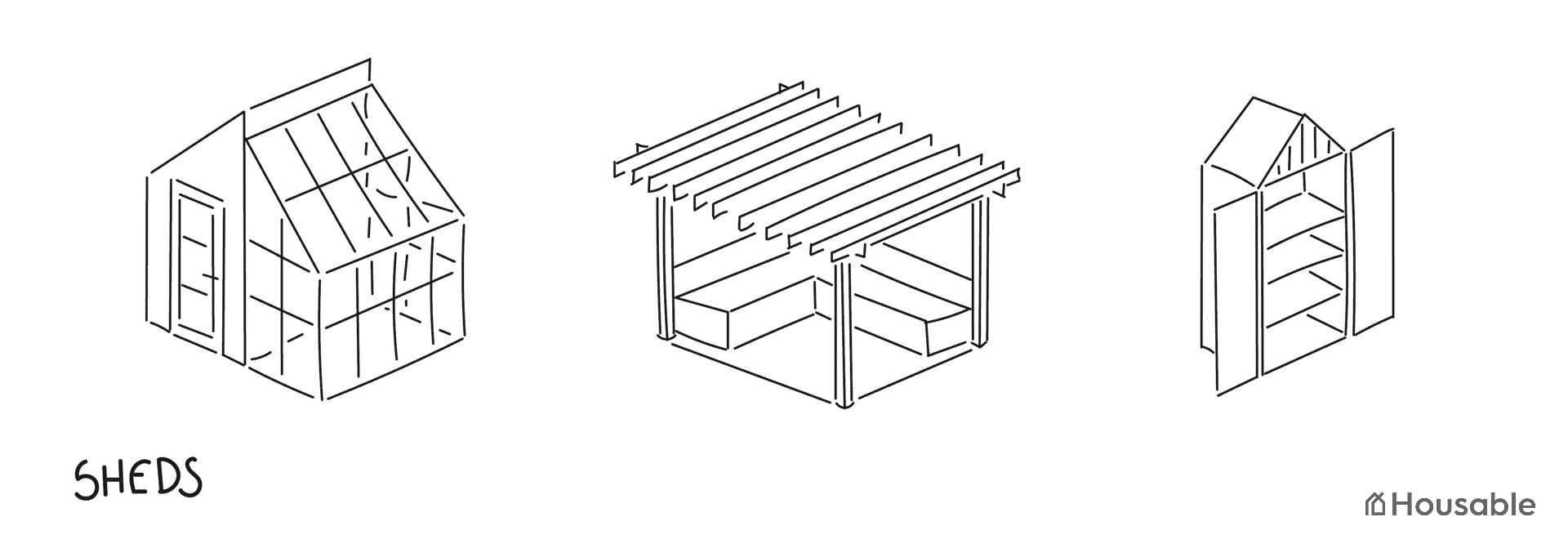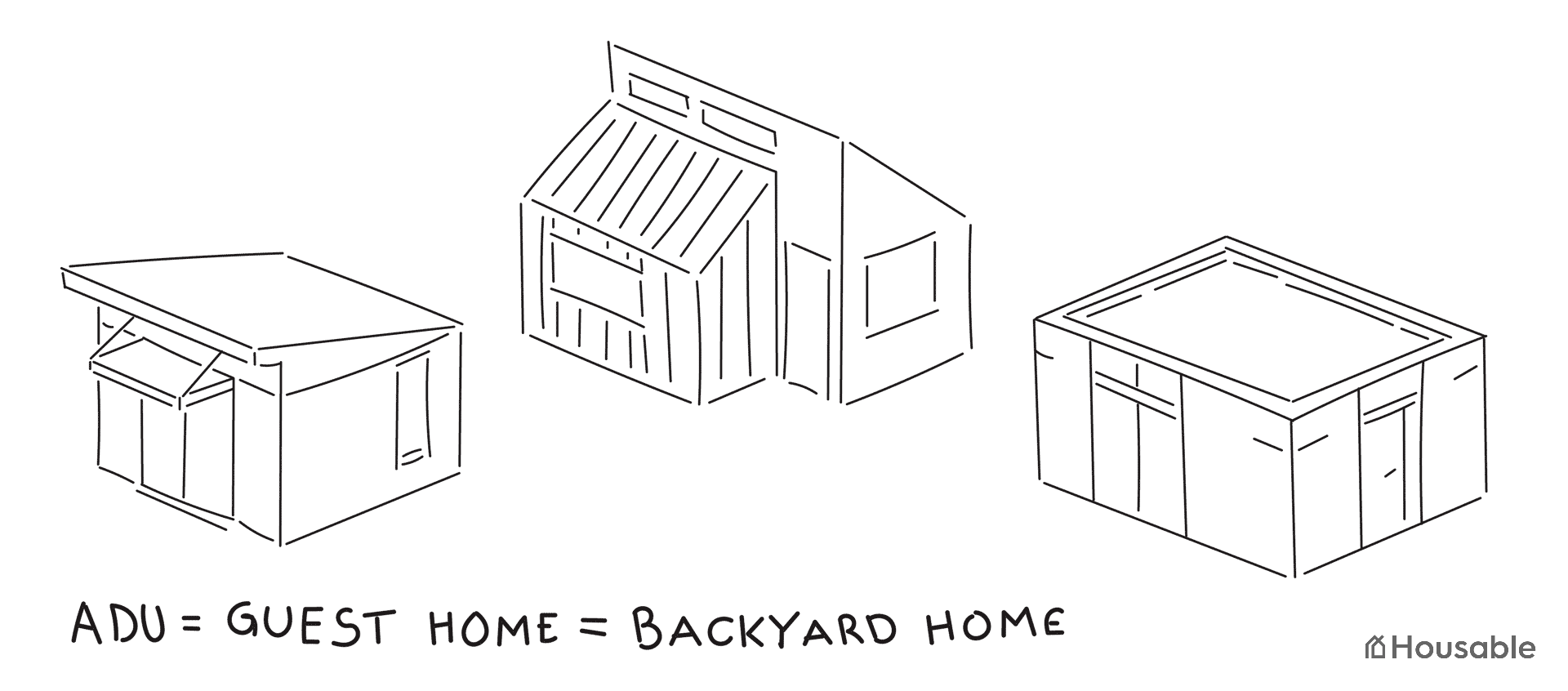ADU (Accessory Dwelling Unit), shed, tiny home, backyard home, guest home - what is the difference?
 More and more people are choosing to add an accessory structure to their property to expand living space for themselves, their family or their friends. Sometimes it’s a backyard studio - a quiet place to work from. Sometimes - it’s an independent home for freshly graduated kids transitioning to the real world. Some build an accessory structure knowing that it will appreciate the value of their property.
More and more people are choosing to add an accessory structure to their property to expand living space for themselves, their family or their friends. Sometimes it’s a backyard studio - a quiet place to work from. Sometimes - it’s an independent home for freshly graduated kids transitioning to the real world. Some build an accessory structure knowing that it will appreciate the value of their property.
Understanding the difference
Taking a step back - if you’re thinking of adding an accessory structure it is crucial to understand the difference between the different structure types. Small details can go a long way in extending the process, so it makes sense to be precise about what you need the structure for and how you want to use it. This will not only save you from unnecessary stress and save money, but it will also will help you get the most of the precious space in your garden.
In this article we’re covering addition of new and detached structures, and their types. If you are interested in converting an existing free-standing structure, or a part of your main residence - stay tuned as we will cover this as well.
So why is it important to understand the difference? First of all - different types of structures are allowed or not allowed in certain jurisdictions or cities. Of course, it is possible to build something small under the radar if no one will ever notice, but you really should consider the legality of your secondary structure - especially if you’d like to sell your property in the future. The permitting process differs widely depending whether you want to have utilities connected and what you want to use your home for. If you plan to connect your unit to city water and sewer systems the project will certainly have to be approved and permitted and in many cases additional parking will be required.
Detached Accessory Structure Types
With those differentiators let’s dive into each accessory structure type and their particular attributes:
ADU (Accessory Dwelling Unit)
This is the official term for any type of additional (secondary) living unit or an apartment that you plan to add to your property in addition to your primary home. ADUs provide full bathroom and kitchen facilities, require permitting and fall into size, design restrictions and other local-zoning requirements. Those rules differ from city to city and the best way to find them is to look through your local zoning code. It takes some effort to go through permitting but as a result your new home will contribute to your property’s value because it is code-compliant, connected to utilities (city grid) and can be used or rented as a totally separate living unit, independent from the primary home. Some cities also allow short-term rentals like Airbnb. Typically an additional parking spot will be necessary to service such a unit, sometimes it is as many as one parking spot per one bedroom. Your local zoning will inform you about the rules and regulations for ADUs in your area. Check for your local zoning at our City Pages, where we’re compiling resources for local communities. Currently, most areas in the San Francisco Bay Area are available.
Shed
 Examples of shed use and designs: for gardening, outdoor lounge and a small storage shed.
Examples of shed use and designs: for gardening, outdoor lounge and a small storage shed.
Shed is the simplest and the fastest type of a structure that you can build in your backyard. Sheds usually don’t have utilities connected and they are meant for daily use, as a quiet studio to work from or a workshop. Maybe a place where you want to enjoy your coffee on a rainy day? Since there are no utilities connected it would be hard to host anyone, even your close friends. In the case of selling your property, you need to check your local zoning - it might be the case that you’ll have to remove it if it is not a permitted structure (illegal). Another limit to sheds is their size. Typically anything above 200sf will require a permit. If you would like to have anything larger it will have to go through a review process. This is a case where it may make more sense to build an ADU instead with a more flexible use for renting short-term or long term for income.
Tiny Home
Tiny homes are a hot topic these days. This is an evolving, flexible term, and thus there is a lot of confusion about what a “Tiny Home” really is, and what you can do with it.
People commonly refer to them with the two basic meanings. They could be considered tiny because of the limited size and related to the trend of downsizing; or they could be considered mobile, have wheels or be generally not permanently attached to the ground in order to be easily moved around. As much as it sounds cool that also means they can’t be connected to the city grid unless in designated areas (for example trailer parks). Tiny homes cannot be connected to residential utilities also because they are not inspected or built to sufficient building codes. Therefore, they are not a widely accepted housing solution in urban areas.
When it comes to size, tiny homes are a great opportunity to reduce possession overload by having limited square footage. It requires spacial creativity and minimalist solutions. They often have decreased overhead space, foldable furniture, like tables, and transformative spaces (for example; transform your dining room into a bedroom by unfolding a bed that’s hidden in the wall). Some of those things are allowed in regular homes, the main difference remains the compact size of the home.
 Examples of mobile Tiny Homes types and designs: some of them have wheels permanently attached, others need to be moved by crane.
Examples of mobile Tiny Homes types and designs: some of them have wheels permanently attached, others need to be moved by crane.
Now the tricky part is it’s mobility. Since they’re mobile they can’t be permitted as real property, and make utility connections. Only homes permanently attached to the ground are allowed to be permitted. As a result in many cities they’re simply not allowed, due to their temporary nature and lack of compliance with building codes. They’re a good solution for off-the-grid living, outside of cities or in specifically designed locations with temporary utility connections like RV parks.
If you’d like to consider getting a tiny home in a city, and consequently going through the permitting process you have to be careful where are you getting one from. First - it has to be designed to meet your local zoning regulations. If it is factory made it has to be inspected along the production cycle and issued a state or nationally approved insignia to certify code compliance. In other words - you can’t buy an off-the-shelf home and expect to install, permit and have it connected to the city grid. If you’d like to buy a ready made tiny home and put it in your backyard in San Jose - the home has to be inspected during production for your local building code, specifically meeting San Jose local requirements.
If you’d like to work with an architect and a contractor to have your tiny home properly permitted and built, you can totally do so. You just have to remember that it has to be a permanent structure, in which case it will be as much a tiny home as it is an ADU. It will have to meet the same regulations as an ADU and thus carry the ADU price tag.
Backyard Home & Guest Home
Those are typically the same terms as an ADU. The difference in names comes from inconsistent terms across states and cities. Other popular names for ADUs are: laneway homes, carriage homes, etc… which usually appear as a result of previous or historical zoning codes. As you may guess they fall into the same regulations as ADU in terms of size, location on site, design restrictions and parking spots.
 Examples of modern Accessory Dwelling Units or Guest Homes or Backyard Homes with slanted, pitched and flat roof.
Examples of modern Accessory Dwelling Units or Guest Homes or Backyard Homes with slanted, pitched and flat roof.
Compare an Accessory Dwelling Unit (ADU), Tiny Home and a Shed
In this article we mentioned 3 different types of accessory structures: ADUs, backyard or guest homes which are permanent homes meant for full-time living; tiny mobile homes great for living outside of the city grid and other, and day-use only structures one can add to their backyard. Those accessory structures specifically intended for living, Accessory Dwelling Units (ADUs) are especially welcome in cities as they are directly chipping away at the growing housing shortage.
